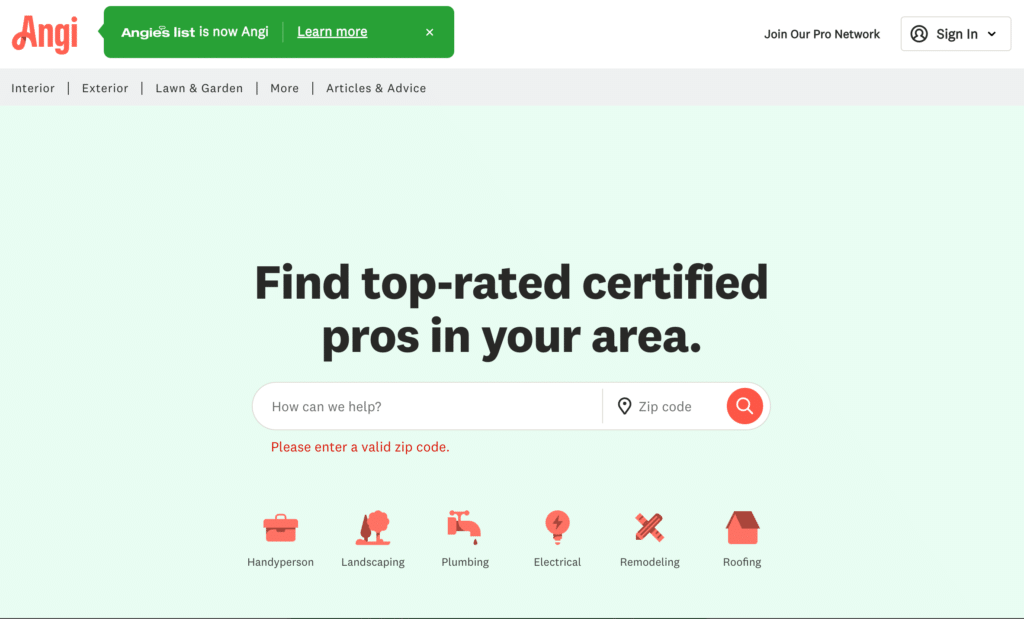Starting a handyman side hustle could mean extra cash for you. It’s both a valuable service and might turn into a major source of income. Whether you’re in it for some part-time work or dreaming big, it’s flexible.
To really boost your earnings and make your skills work for you, follow our tips and strategies below.
Key Takeaways
- Understand the earning potential of a part-time handyman business.
- Learn how to establish a lucrative handyman side hustle.
- Discover the essentials for starting a profitable handyman business.
- Explore strategies for setting an optimal hourly rate.
- Gain insights into scaling your hobby into a small business.
- Find out how to generate extra income with just a few hours a week.
Assessing Your Handyman Skills for a Profitable Side Hustle

When you think about starting a handyman side hustle, your skills are key. Can you handle tasks like furniture assembly or do electrical work puzzles you? It’s important to know what you can do and what you might need to learn more about.
Stepping into a handyman job involves a variety of work. You might fix leaky faucets or repair drywall for homeowners. Adding specialized skills to your resume can help you offer more services and boost your earnings.
Knowing the legal side of handyman work is also vital. If your services include contractor or electrical work, understanding regulations is crucial. This not only keeps you safe legally but also shows your clients you are a qualified professional. Here’s a guide to essential skills and certifications:
| Skill Area | Description | Certification Required? | High Demand? |
| Furniture Assembly | Constructing and setting up flat-pack furniture | No | Yes |
| Basic Electrical Work | Installing light fixtures, switches, and outlets | Yes, for complex tasks | Yes |
| Plumbing Repairs | Fixing leaks, unclogging drains, and replacing fixtures | Yes, for major work | Yes |
| Painting and Drywall | Interior and exterior painting, drywall repair/installation | No | Yes |
| Outdoor Maintenance | Deck repairs, gutter cleaning, and landscaping | No | Yes |
Assessing your readiness in high-demand areas helps set the foundation for a successful handyman side hustle. Getting any necessary certifications can broaden the services you offer. This makes you more appealing to homeowners and real estate experts.
Improving your handyman skills is a continuous journey. Stay updated with new trends & technology to remain competitive. By evaluating your abilities, you’re on your way to making your side hustle a solid income source.
The Essentials of Starting Your Handyman Side Hustle
Starting a small business in the handyman field involves more than just being skilled. It’s about planning carefully and having the right support. A successful side hustle can bring in extra cash. You need to know the key steps for launching and maintaining your business well.
Creating a Business Plan and Setting Goals
Start with a clear business plan. It should list your services, pricing, and your money goals. Setting specific goals, like earning an extra $1,000 a month, helps you stay on track. This is essential for shaping your business, knowing who your customers are, and aiming for growth.
Understanding and Acquiring Handyman Insurance
Then, look into getting liability insurance. A handyman business has its risks. Insurance protects your work and provides peace of mind. It keeps you and your clients safe from unexpected events.
Investing in the Right Tools for the Job
A good handyman values a complete set of tools. Though costly at first, they’re necessary for various tasks. The right tools increase your work quality. This leads to happy customers and more jobs through word-of-mouth.
Marketing Your Handyman Services Effectively
Lastly, set aside money for marketing. Hire a professional designer to make a strong brand image. Use social media to share your work and interact with people. This boosts your presence and builds trust locally.
Most Common Types of Jobs a Handyman Can Expect
- Doors: Various door-related jobs like weather stripping, doorknobs, and deadbolts.
- Exterior Painting: Take advantage of the demand for exterior painting. Full house repaints are common, especially in winter and spring.
- Soffit and Fascia Repair: Profitable and relatively easy job involving replacing rotten boards and ensuring weather sealing. Enjoy good profit margins with quick turnaround times.
- Deck Staining: Deck staining can be a lucrative stream of income, particularly in the summer and spring seasons. Despite weathering risks, it still provides a steady source of revenue.
- Sinks: Tasks involving faucet repairs, garbage disposals, and leaky sinks.
- Electrical: Includes jobs related to exterior lights, switch covers, and outlets.
- Ceiling Fans: Jobs often involve fixing non-functional fans or lights.
- Blinds: Installation and repair of vertical and standard blinds.
- Bath Attachments: Tasks related to toilet paper holders, towel bars, and shower bars.
- Showers and Tubs: Common tasks include fixing shower drips and leaky roofs.
- Smoke Detectors: Updating and replacing smoke detectors.
- Air Filters: Replacing air filters and rebuilding screens.
- Pressure Washing: Using electric pressure washers for cleaning.
It is important to note that this list does not include some other common types of jobs that are not recommended, like toilet replacement, because of the challenges involved.
Maximizing Earnings: Pricing Strategies for Your Handyman Work
Setting the right price for your handyman service is vital for higher profits. You might consider a flat rate or charge by the hour. This choice depends on what works for your business goals. The key is to create a balance. Your clients should see the value, and you should get fair pay, especially for tasks like fence repair.
When deciding on an hourly rate, think about all the time you put in. Count in the preparation and the cleanup. This makes sure your hourly rate truly shows the work involved in your handyman service. For instance, if repairing fences means extra prep for materials, include this in your prices.
- Assess Market Rates – Look into what others charge locally to stay competitive.
- Consider starting with competitive hourly rates, gradually increasing as you provide more value to your customers.
- Account for Skill Level and Experience – Base your prices on your expertise, especially for specialized tasks.
- Include All Costs in Your Calculation – Don’t forget about travel, tools, and other business costs.
- Value Your Time – Your management time is just as crucial as repair time.
Being open about your pricing is key. Giving clear estimates builds trust and may bring clients back. Show the cost breakdown and your pricing reasons. This helps customers understand the value they get. It can turn a simple job into a lasting relationship. As you adjust your pricing, aim for a win-win: fair pricing for good work and respect for your skills and dedication.
Building a Client Base: Networking and Repeat Business
As you start in the handiwork world, growth isn’t just about your work quality. It’s also about connecting with clients and encouraging them to come back. To thrive, use every tool available, from social media to handyman apps, to keep customers happy and boost your income.
Leveraging Social Media for Exposure
Being active on social media can change how you find and keep customers. Use it to show off your skills, share tips, and connect with local communities. A strong social media presence can increase your visibility and bring in more customers.
Offering Exceptional Customer Service to Foster Repeat Business
Exceptional customer service can help you get repeat business. Make sure every job ends with a satisfied customer. Their positive feedback can be a powerful endorsement. Remember, a happy customer not only comes back but can also promote your service to others.
Utilizing Handyman Apps and Online Platforms to Find Work
Handyman apps and online platforms have revolutionized the way handymen find work and connect with clients. These platforms provide a range of benefits, from streamlining the job-finding process to providing a convenient way for clients to find and hire professionals for various household tasks.
Must-Have Handyman Apps
Some of the must-have handyman apps for busy contractors include:
1. Pipe Trades Pro: A comprehensive app for pipe trades professionals.
2. All-In-One Calculator: A versatile calculator for various calculations.
3. GasBuddy: An app for finding gas stations and prices.
4. Handyman estimate template: A template for creating estimates.
5. QuickBooks Online: A cloud-based accounting software.
Websites and Apps for Finding Handyman Jobs

For handymen looking for work, websites and apps like Angi, Thumbtack, TaskRabbit, Porch, and Nextdoor are excellent resources. These platforms allow handymen to create profiles, list their services, and respond to leads. They also provide a range of features, such as scheduling tools and payment processing, to help handymen manage their work efficiently.
Scaling Your Handyman Service into a Full-Time Business
Moving from part-time to a full-time business can feel overwhelming. But with the right skills and market knowledge, you’re set for success. It’s important to spot where you fit in the economy and grow your services wisely.
Expanding Offered Services to Meet Market Demand
With a growing need for home improvements, now is the time to broaden what you offer. Learning about smart homes or energy efficiency can set your business on a growth path. It also means keeping up with trends to stay ahead.
Time Management: Key to Growing Your Business
Good time management takes your business to the next level. It means making every hour count towards your success. Managing client work and admin tasks smartly boosts efficiency and profit. Align your work with high demand times for the best outcome.
Hiring Additional Help and Collaboration with Contractors
As your business grows, you’ll need more hands on deck. Hiring skilled workers lets you take on more and maintain quality. Working with contractors allows for diverse projects. These steps will help your handyman business evolve into a full-time venture.
Conclusion and the Future
Starting as a handyman is more than making extra money; it’s about creating a successful business. This guide is like a map, showing you the steps to take. By following it, you will move from a side project to a leading business.
Looking ahead, there is much opportunity for dedicated handymen. This guide gives you the knowledge to thrive in a competitive area. Your effort and persistence are key to your success. You’ll need to find and fill needs with your unique skills.
Turning your side hustle into a major business is possible. This guide’s advice helps you not just earn more, but build a lasting company. Use these insights and push forward. Your handyman business has a bright future—it’s ready for you to shape it.
FAQ
How much does it cost to start a handyman business?
The cost to begin a handyman business can range widely, but on average, it can cost between $92,000 to $162,000 to open your own handyman business, including various costs such as a vehicle, signage, equipment, inventory, computer hardware and software, furnished offices, etc.
How to start a handyman business in Virginia?
To start a handyman business in Virginia, you need to have a contractor license issued by the Board for Contractors in the Virginia Department of Professional & Occupational Regulation, as there isn’t a license specifically for handyman work.
Does a handyman need a license in Texas?
In Texas, a handyman may not need a license for small repairs, but for larger projects or those that require a contractor’s license, a license is typically required. The specific requirements vary by city and type of project.






